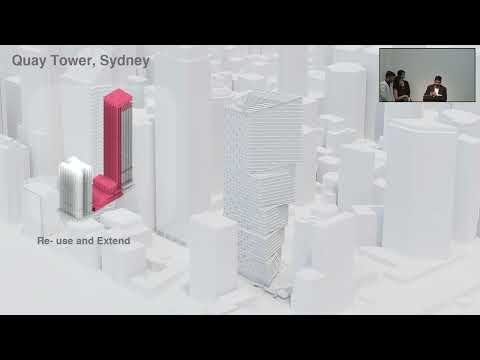
Bhooshan Studio 2023-2024
Studio: Shajay Bhooshan
Tutors: Henry Louth, Keerti Manney
Team: Chaitanya Goyal, Ullas Murugesh Rao, Janvi Rashesh Paun, Meghana Srinivasa Rao
Urban Renaissance explores the pressing issue of urban cores dominated by vacant office buildings, exemplified by trends in cities such as London. Previously bustling business districts, like Canary Wharf, are facing challenges as these structures are vacated, posing environmental concerns with 32% of construction waste ending up in landfills. Urban Renaissance embraces this issue as an opportunity to redefine vacant districts by transforming them into vibrant, mixed-use urbanscapes.
Our proposal centres around a multimodal approach, a departure from the conventional focus on offices. Our design introduces dynamic transformations over time, ensuring adaptability to changing urban demands. Key to this is a unique 4-stakeholder representative model, involving: residential, office, commercial, and city co-operatives. Unlike conventional urban planning, the proposed system holistically engages stakeholders using a simulation-driven approach. The inclusion of two dimensions of verticality and time in the existing land-value simulations add precision to decision-making. Verticality introduces accuracy in simulating land value based on spatial decisions, while time represents programmatic changes within the urban fabric making a 4-dimensional land value simulation. Using a 4D simulation allows the process of decision-making to pass through multiple trial and error processes.
One significant challenge identified involves the arrangement of stacked deeper floorplates. Carving the floorplates diagonally enabled us to introduce natural light, foster visual connectivity, and facilitate circulation between diverse functions. The emphasis on interior urbanism enables harnessing natural light effectively for various programs.
Urban Renaissance introduces tiles replacing clusters of voxels, creating versatile residential and commercial spaces, enhancing the adaptability and flexibility of interior urban environments. This thesis is potentially a globally applicable urban simulation system tailored for structures featuring deep floorplates as a blueprint. At its core, our simulation model maintains a consistent structural framework, allowing for the interchangeability of interiors in direct response to the dynamic requirements of diverse urban programs.